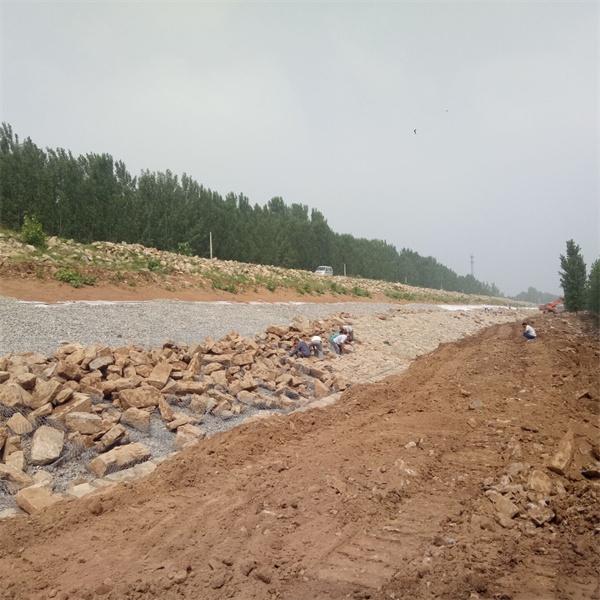des . 02, 2024 02:36 Back to list
china gabion headwall
Understanding China Gabion Headwalls A Sustainable Solution for Erosion Control
In the realm of civil engineering and environmental management, gabion structures have emerged as a promising solution for a variety of applications, particularly in addressing erosion and managing water flow. Among these structures, gabion headwalls play a crucial role, especially in countries like China where rapid urbanization and infrastructure development present unique challenges. This article will delve into the significance of gabion headwalls, their construction, benefits, and considerations for sustainable development.
What are Gabion Headwalls?
Gabion headwalls are masonry structures made of wire mesh filled with stones or other materials designed to control and manage water flow at the entrance of a drainage system, culvert, or stormwater outlet. They act as a transitional element that stabilizes the surrounding environment and prevents soil erosion caused by fast-moving water. In China, where heavy rainfall and flooding are common, the use of gabion headwalls becomes vital for protecting vulnerable land and infrastructure.
The Construction of Gabion Headwalls
Constructing a gabion headwall involves several steps
1. Site Assessment The first step is to assess the site conditions, including soil type, drainage patterns, and the potential for erosion. This assessment helps in designing an effective gabion structure that meets the specific needs of the location.
2. Material Selection Gabion headwalls are typically made from a galvanized wire mesh that is durable and resistant to corrosion. The fill material, often natural stones, should be well-graded and able to withstand environmental forces.
3. Foundation Preparation A strong foundation is essential for the stability of the headwall. Excavation may be required to level the ground and provide a stable base.
4. Assembly The wire mesh is fabricated into boxes or baskets, which are then filled with the selected stone material. Care is taken to ensure that the stones are tightly packed to avoid shifting.
5. Placement and Backfilling The filled gabions are placed at the designated site, with proper alignment to ensure effective water flow management. Backfilling with additional material further stabilizes the headwall and enhances its durability.
china gabion headwall

Benefits of Gabion Headwalls
1. Erosion Control One of the primary advantages of gabion headwalls is their effectiveness in controlling erosion. By dissipating the energy of flowing water, they prevent soil loss and maintain the integrity of the surrounding landscape.
2. Environmental Sustainability Gabion structures utilize natural materials, making them an environmentally friendly option. They blend well with the ecosystem and can even promote vegetation growth over time.
3. Cost-Effectiveness Compared to traditional concrete structures, gabion headwalls are often more cost-effective due to lower material and labor costs. Their installation can be quicker, reducing the overall project timeline.
4. Flexibility and Aesthetics Gabion headwalls can be designed in various shapes and sizes to fit different site conditions. They can also be aesthetically pleasing, contributing positively to the landscape.
Considerations for Sustainable Development
While gabion headwalls offer numerous benefits, there are important considerations for their sustainable implementation
- Regular Maintenance Although durable, gabion structures require regular inspection and maintenance to ensure their effectiveness over time.
- Local Material Sourcing To minimize environmental impact, sourcing fill materials locally is recommended. This practice not only supports local economies but also reduces transportation emissions.
- Community Involvement Engaging local communities in the planning and maintenance of gabion structures promotes stewardship and increases awareness of environmental issues.
In summary, gabion headwalls represent a sustainable and effective solution for erosion control in China and beyond. As the country continues to face challenges related to urbanization and climate change, the integration of such resilient structures will play a pivotal role in promoting environmental integrity and sustainable infrastructure development.
-
HESCO Gabion Baskets for Coastal Erosion Prevention
NewsAug.22,2025
-
Longevity and Durability of River Rock Gabion Walls
NewsAug.22,2025
-
How to Integrate Gabion 3D Walls in Urban Planning
NewsAug.22,2025
-
Reno Mattress Gabion Applications in Civil Engineering
NewsAug.22,2025
-
How to Install Wire Mesh for Gabion Baskets Properly
NewsAug.22,2025
-
Best Materials for Filling a Chain Link Gabion
NewsAug.22,2025
-
Wire Mesh Thickness Impact on Gabion Wall Load Bearing
NewsAug.12,2025






